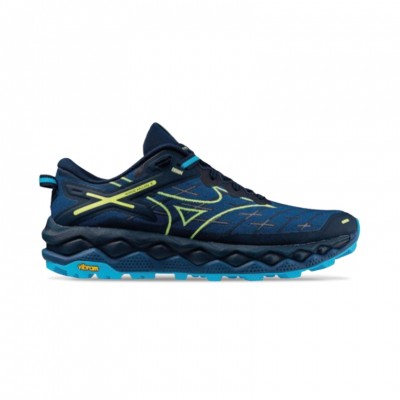Get ready, we are going to talk about high altitude running training, benefits and risks for runners... On many occasions we have heard of high-performance athletes who develop part of their training planning at high altitude. In my case I got this opportunity thanks to my coach Ivan Acereda who was going to spend 4 weeks of training in Font Romeu (France) to finalize his preparation for the Spanish championship of 10000 in track and Iberian trophy to be held in Braga.

Being this my first season in athletics and after several competitions with satisfactory results, I have decided to make part of the preparation for the Cursa de Bombers de Barcelona, training at altitude and thus be able to enjoy running in full contact with nature, without leaving the asphalt.
In this article I will explainmy experience of training at altitude and the effects of hypoxia, a state of oxygen deficiency in the blood, cells and tissues of the body.
High altitude training: What are the benefits?

It mainly increases base endurance. This is because from 1500m of altitude, every 300m of ascent there is a reduction of 3 of VO2 (maximum amount of oxygen that our mechanism can metabolize), and therefore, it is recommended to perform this type of training between 1700m and 2500m. With this we will achieve in the runner an additional overload that favors the release of the renal hormone erythropoietin (EPO).
Improves fatigue tolerance index
The heart rate increases by 10% at 2000m altitude. If we provoke controlled efforts, the body adapts to a higher performance. But it is important to adapt progressively, otherwise it can be counterproductive.
Increased power recovery capacity in intervals
This will help us to retain less lactic acid in power changes during our race due to the increase in pulmonary ventilation caused by the decrease in barometric pressure.
Increased aerobic and anaerobic threshold recovery capacity.
Even having many benefits, high altitude training must be done responsibly since we get them by adapting our body to a more demanding situation than usual as I explained above.
Risks of training at high altitude
- The higher the altitude the lower the temperature. WRAP UP WELL!
- Greater solar irradiation. It is highly recommended to always wear a head covering and use sunscreen for the skin.
- Decline due to excessive training load
We must understand that the conditions are not the same as our usual terrain. It is therefore advisable to do a few days of acclimatization and to do it progressively without ever overdoing it, working at a low intensity. LISTEN TO YOUR BODY
- The higher the altitude, the greater the risk of dehydration.
At 2000m altitude, the amount of water in atmospheric vapor decreases by 50%. This accelerates sweating exponentially. Be well hydrated, water and recuperators.
If our body works at the limit, the "engine" consumes more, so we are in danger of malnutrition or "paresis". It is very important that we pay attention to our nutrition since the basal metabolism increases additionally between 100 and 200 kcal, while in these altitude conditions the athlete tends to lose appetite.
It is therefore important to consume good loads of carbohydrates and glucose, complementing each end of training with proteins that help us to rebuild muscle for further recovery.

My experience training at altitude
First 3 days
The first 3 days I did very quiet runs to acclimatize my body to the altitude. I found them very difficult, my head wanted to go faster but my body could not, my pulse was too high for the pace I had and my legs were very heavy.
Day 4 of training, SERIES!!!
first time I ran in an athletics track and at 1850m!!! We decided to do two blocks of 4 series of 3 minutes resting 75 sec between them and 3 minutes between blocks. Already in the warm up my feelings were much better than previous days. And the series proved it, they were fast although I'm not going to deceive, in the series always suffer!
Day 5
The cold and the snow were noticeable, I had 16 km with changes of 200m every 2km. Era a training to be done rolling but the snow prevented us from riding on the asphalt and we went back to the track. Perfect training! My body was working perfectly again.

Day 6
Being training next to my brother in law makes me feel more athletic, so this day I had to double up, a few km in the morning and a gym session. The gym strengthens your joints, ligaments, tendons... and develops your muscles creating a kind of "airbag" that protects your body from the impacts of running. It is always advisable to do two gym sessions a week. And in the evening, another easy run. 20 km more for the body.
Day 7
The SERIES are back and besides the expected hardness I did them at -7º and with a lot of air. The coach said: "forget about the watch, the important thing is to finish the training". Said and done. 4 sets of 400m with active recovery of 400m, 3 minutes of "live" recovery and 4 sets of 400m with active recovery of 200m. My face was freezing and I was very warm, but this workout adds up to twice as much!
Day 8
Transition training. In the morning gym and in the afternoon very quiet ride to recover and get the body used to running, although for 3 km we were a little stronger to activate the body. Another 16 km.
Day 9
We had thought about doubling, but my body told me NO! So one of the very important things in athletics is to listen to the body. In the morning I rested and in the afternoon a short and fun intervallic training that I had never done before. During the warm up the good feelings come back so it's time to push myself. We completed a run with short changes of 10" strong and 20" recovery, for an hour. Total 14 km.
Day 10
12 km transition workout. It is only important to add km this day without looking at the speed. We finish with 4 x100 to activate legs.
11th day
Back home, and rest to assimilate the 130 km I have done at altitude.
The following week I will do some quiet runs to recover and assimilate the workouts, but we will still put in two quality days.
During all these days has been very important hydration, good nutrition, as well as the time spent stretching after each workout.
With all these tips and my experiences maybe you will discover the method to improve your performance or simply enjoy training surrounded by elite athletes as if you were one of them.
Igor Jacoste uses Adidas Boston Boost 6 for his quality/series workouts
Read more news about: Running Training

















